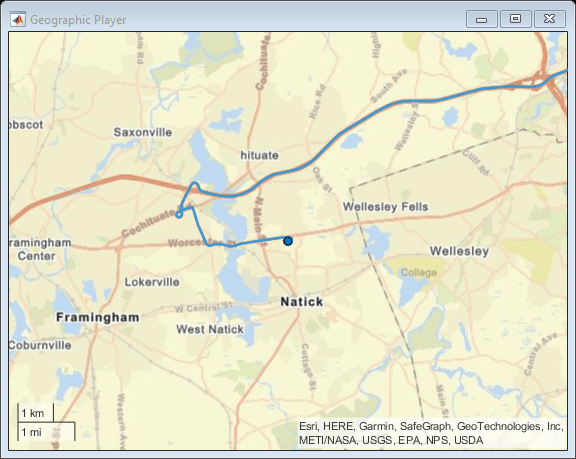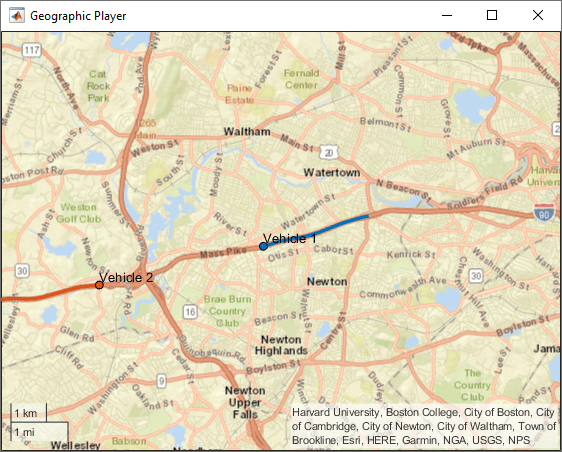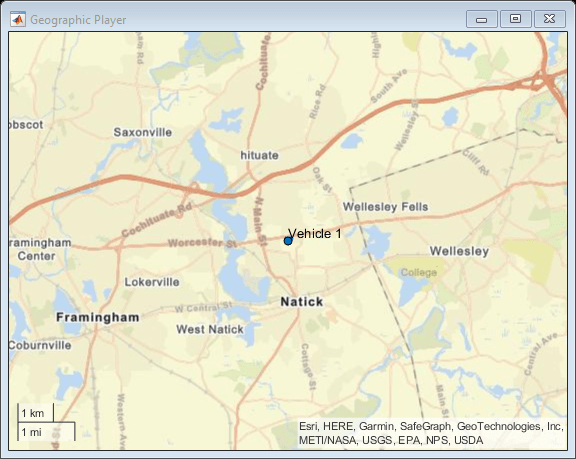plotPosition
Display current position in geoplayer figure
Description
plotPosition(
uses player,lat,lon,Name,Value)Name,Value pair arguments to modify aspects of the plotted
points.
For example, plotPosition(player,45,0,'Color','w','Marker','*')
plots a point in the geoplayer figure as a white star.
Examples
Input Arguments
Name-Value Arguments
Tips
When a vehicle's track goes outside of viewable area, the map automatically re-centers based on the value of the
geoplayerCenterOnIDproperty.
Version History
Introduced in R2018a
See Also
geoplayer | plotRoute | reset | latlon2local | local2latlon
1 Alignment of boundaries and region labels are a presentation of the feature provided by the data vendors and do not imply endorsement by MathWorks®.


